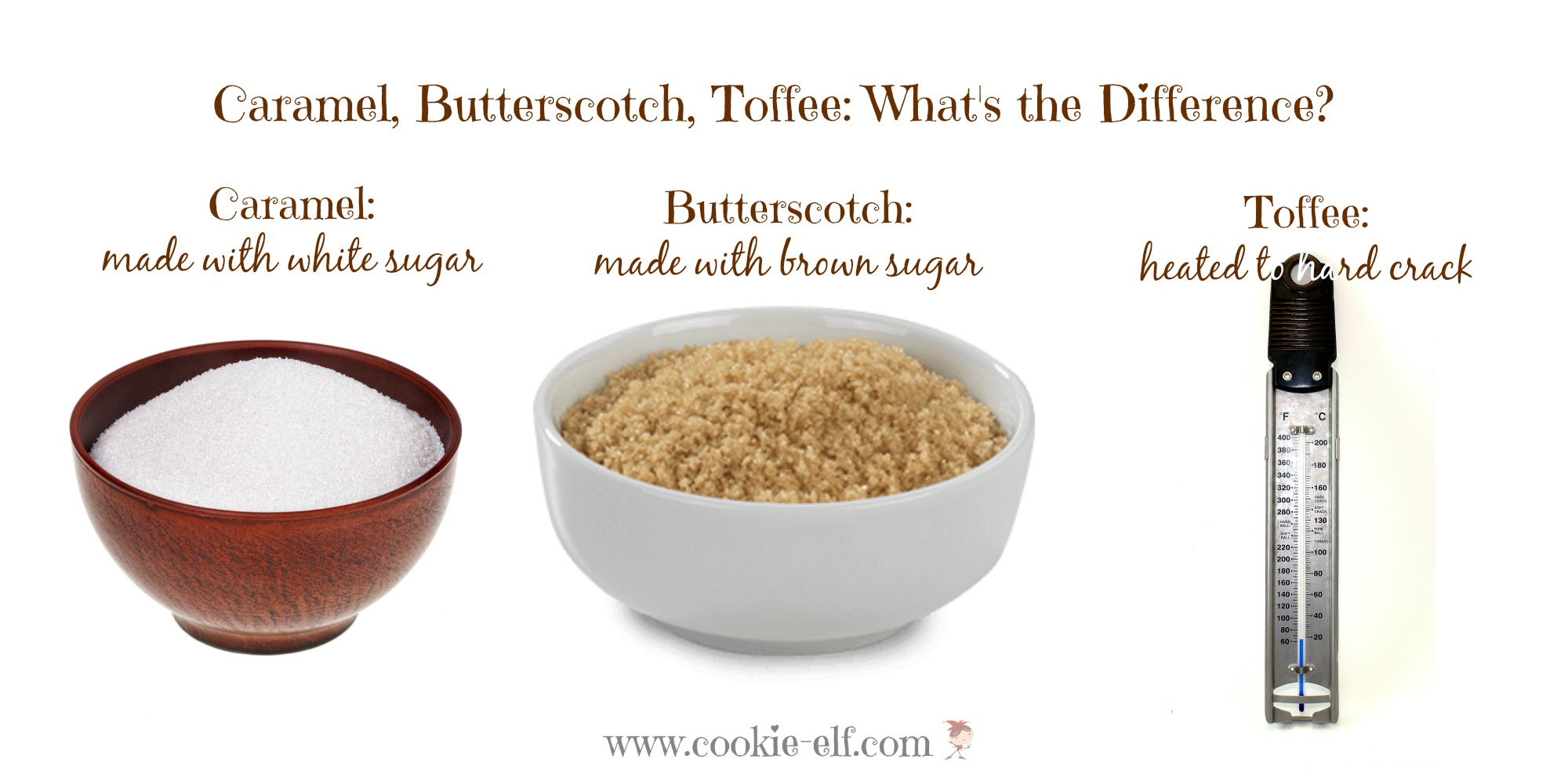Caramel in Cookies: a Favorite Flavor
Caramel in cookies, ice cream, desserts, and glazes is a sweet, dense, warm flavor that appears in two forms: as a sauce and as a candy in its own right.
How It Is Made
Caramel is made by cooking granulated sugar to a high temperature, a process called caramelization. In simple terms, here’s how it works: as you cook sugar, heat changes it from a solid to a liquid. The color changes from white to amber to dark brown (depending upon how long and how hot you cook it).
The result is caramel candies or caramel sauce, depending upon what ingredients you add, the proportion in which you add them, and how long you cook them.
Two Main Kinds of Caramel in Cookies

Purists claim caramel can contain nothing but pure sugar and water. Yet cooks through the ages have discovered ways to achieve a caramel flavor in the kitchen, sometimes using ingredients in addition to granulated sugar: butter or margarine, cream (or half and half or milk), corn syrup, sweetened condensed milk, vanilla extract, or a host of others.
Caramel’s flavor, density, and viscosity vary widely depending upon how it is made and what it will be used for. So when it comes to caramel in cookies, do as The Elf does: follow the cookie recipe directions and have a heavy cooking pot and a candy thermometer on hand in case you need to make your own caramel combination. You’ll find two kinds of caramel in cookie recipes.
Caramel Sauce
There’s no “one-size-fits-all” caramel sauce for cookies. Remember that caramel is a flavor – and a forgiving one, at that, especially in a recipe that includes other ingredients. If a cookie recipe calls for a caramel sauce (as in Chocolate Caramel Brownies or Millionaire Bars), be careful to follow the recipe directions carefully, particularly when it comes to the ingredients to use and the proportions in which to use them. In all likelihood, the sauce has been developed specifically for that recipe, taking into account other ingredients and bake time. Some recipes, like Cranberry Caramel Date Bars or Chocolate Chip Oatmeal Caramel Squares) go one step easier and call for prepared caramel sauce.
Caramel Candies
Manufactured caramel candies are a fun ingredient in cookies used different ways. For instance, the recipe may call for you to melt candies and add to other ingredients to make a filling, layer, or topping. Or you may use the candies as fillings for drop cookies, thumbprints, or rolled cookies. The candies will melt in the oven.
When your cookie recipe calls for “unwrapped caramel candies,” enjoy the convenience. Candy manufacturers have perfected the art of caramel creation, which is comforting when you’re including the candies in a cookie recipe. They’re a proven commodity. There’s no need to panic and mistakenly believe you need to trot off to Wonka school to learn to make them on your own. Just buy wrapped caramels at the grocery store, unwrap them, and use them.
Caramel, Butterscotch, and Toffee: What Are the Differences?
The three terms are easily confused. The simplest explanation is this:
- Caramel is made with granulated sugar.
- Butterscotch is made with brown sugar.
- Toffee is butterscotch (made with brown sugar), heated to the hard crack stage.
More Ingredients in Cookie Recipes
Candied Ginger: make your own for less ...
4 Kinds of Cherries in Cookie Recipes ...
Nonpareils: the cookie decoration "with no equal" ...
Sugar in cookies: what it does and what kinds to use ...
Stevia in cookies: a no-calorie sugar substitute ...
Using oatmeal in cookie dough ...
More about cookie ingredients on our Pinterest board ...
Return from Caramel in Cookies to The Cookie Elf home
Find A Cookie Recipe or Cookie Baking Tip
The Cookie Elf
FREE! 6 Easy Cookies Recipes for Kids and Families
Get your free copy here or when you fill in the form below.




New! Comments
Have your say about what you just read! Leave me a comment in the box below.